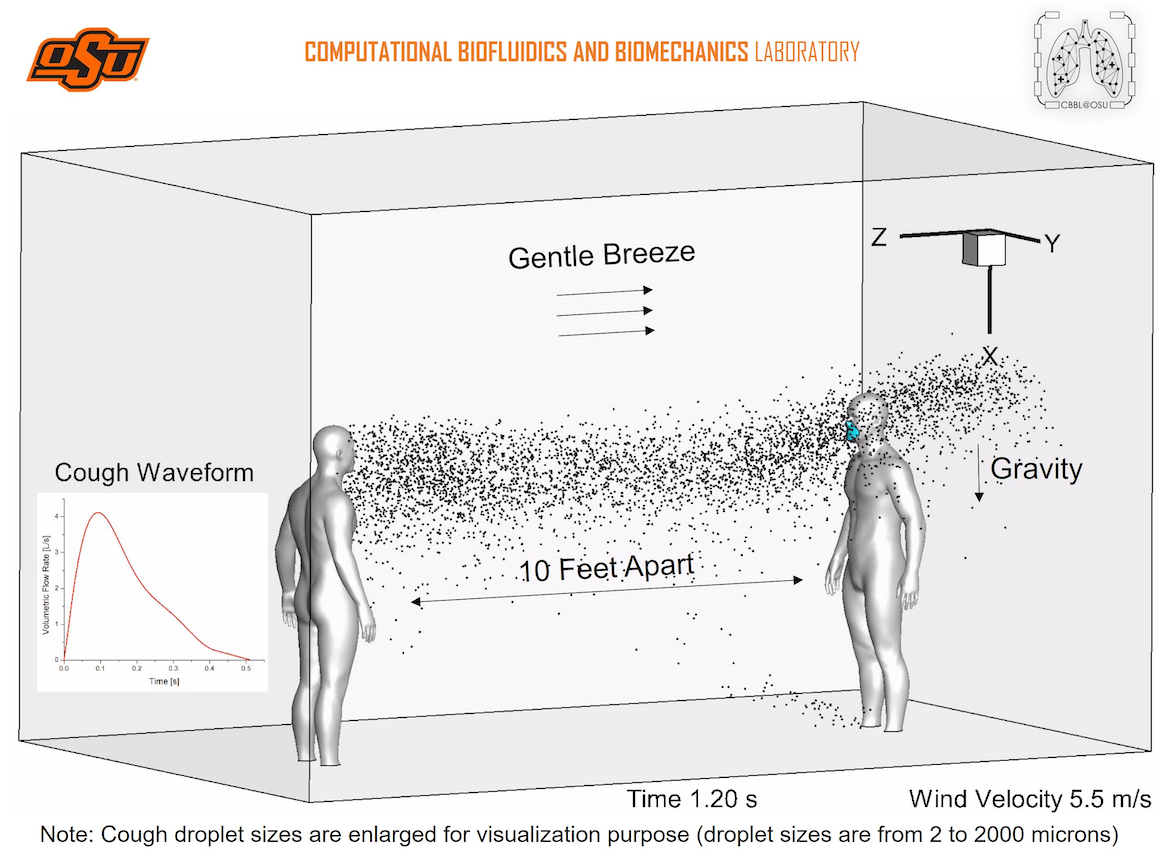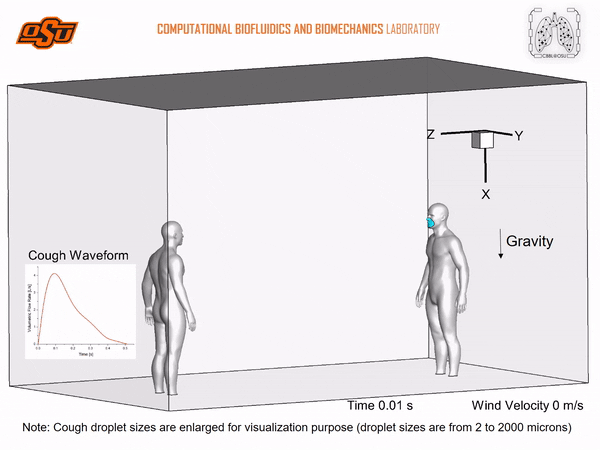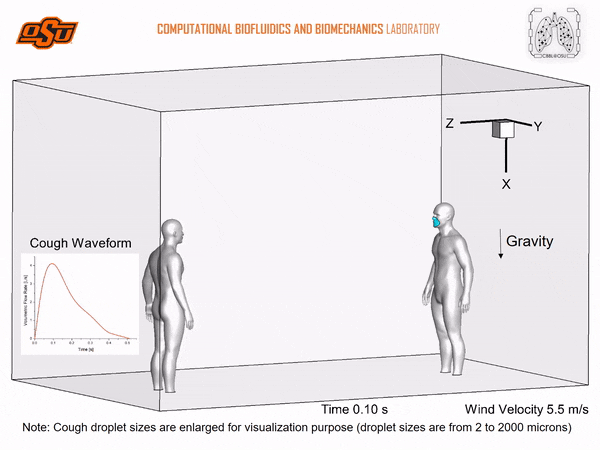
OSU researchers examine social distancing models, encourage caution
Tuesday, April 7, 2020
The CDC has recommended people maintain six feet of separation to lessen the spread of COVID-19. But is six feet enough?
According to Oklahoma State University researchers, it may depend on the environment.
A team of engineers in OSU’s College of Engineering, Architecture and Technology is
researching what effects social distancing has in different situational and environmental
conditions.
The goal is to provide more details on how COVID-19 aerosol transmission occurs and educate people on how to protect themselves more effectively.
Dr. Yu Feng is an assistant professor in chemical engineering who specializes in computational lung aerosol dynamics. He and his lab colleagues — Jianan Zhao, Hamideh Yayati, Hang Yi and Ted Sperry — are collaborating with Global Healthcare Industry Director Dr. Thierry Marchal and Vishal Ganore, an academic strategic partnership manager with engineering simulation and 3D design software company Ansys.
Feng and his lab members have simulated different environmental conditions, such as calm air, light air and a light breeze blowing along different directions, to see if six feet of distance is sufficient. They are also simulating how individuals cough and how cough droplets can affect another person, whether they are running or talking to someone who is potentially infected.
Research indicates the six-foot social distancing policy is sufficient if ambient air is static. However, even in a light wind (around 2 mph), droplets from a cough can carry farther than six feet.
These graphics illustrate the difference between a static environment (above) and an environment with a slight breeze (below).
The team also analyzed the exposure risk for running together. With runners in single file, two meters apart (roughly six feet), a trailing runner would be exposed to droplets if they were running at a 10 minute-mile pace. Running faster would increase the chance of exposure.
Feng’s lab is researching more simulations using computational fluid-particle dynamics (CFPD) to investigate how ambient air humidity influences airborne transmission of COVID-19.
OSU researchers are also working to develop a pulmonary targeted delivery method to deliver antiviral therapeutic aerosols to small airways to treat COVID-19.
Feng hopes to help people understand why the stay-at-home initiatives, social distancing and protective equipment are so important in slowing the spread of the disease.
“My sister is a doctor in China who volunteered and supported the battle against COVID-19 in Hubei,” Feng said. “I know how serious COVID-19 is and how everybody needs to be responsible and do what they can to help fight this battle. This is important not only to slow the spread of the virus, but more importantly to help doctors, nurses and those who are working on the front lines — and of course the more susceptible populations.”
Feng’s fight against COVID-19 extends beyond the lab. He is a member of the OSU Chinese Faculty and Staff Association (CFSA), which recently partnered with the Stillwater Chinese Baptist Church to import medical supplies from China, including 7,200 medical masks for the Stillwater Medical Foundation and 2,400 masks for the Stillwater Police Department. They expect more to arrive from China in the weeks to come.
“This is a pandemic, so as members of our community, my students and I will continue to work on research related to COVID-19,” Feng said. “This is my home, so I want to do something to use our lab’s expertise to help Stillwater, Oklahoma and the United States. We are together in this war.”
MEDIA CONTACT: Kristi Wheeler | CEAT Marketing | 405-744-5831| kristi.wheeler@okstate.edu



